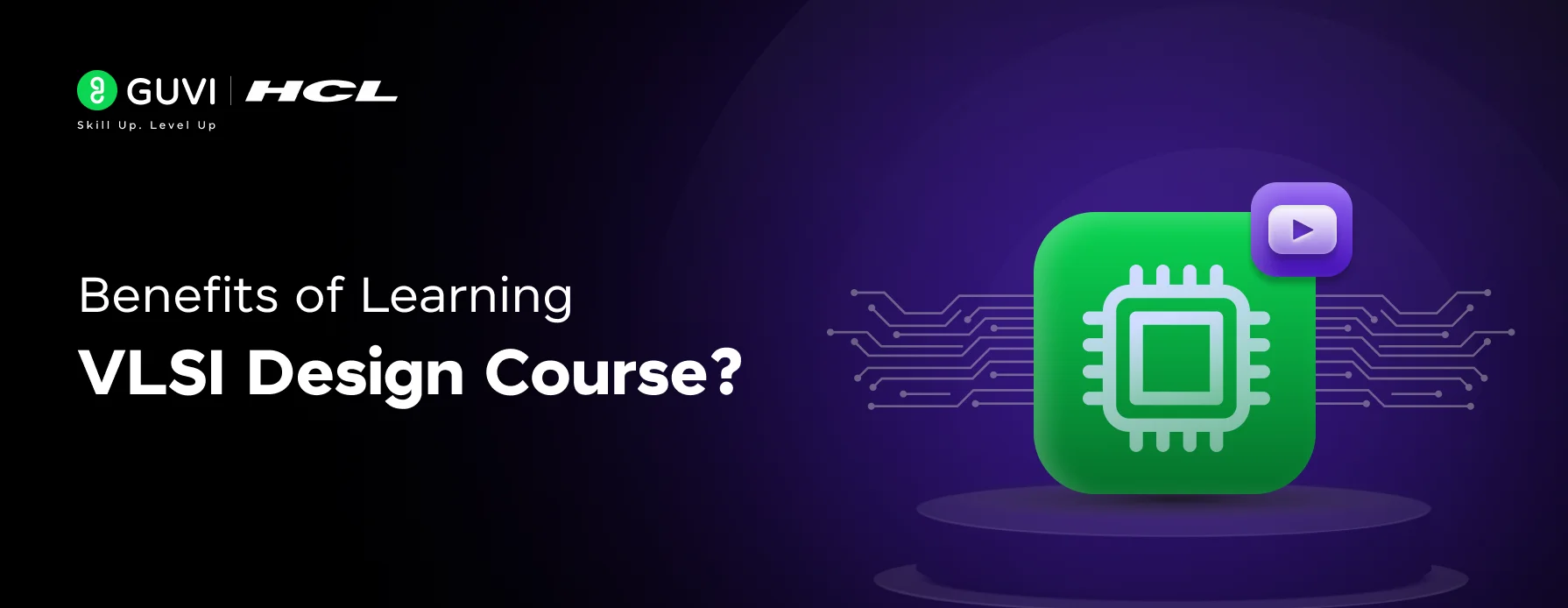
12 Strong Benefits of Learning VLSI Design Course
Jan 22, 2025 4 Min Read 931 Views
(Last Updated)
In a world driven by compact, high-performance technology, the benefits of learning VLSI design course (Very Large Scale Integration) are enormous and play an important role in modern innovation.
By enabling the integration of millions of transistors onto a single chip, VLSI design has revolutionized industries ranging from consumer electronics to healthcare and automotive.
In this article, we’ll explore the key benefits of learning VLSI design course and understand why it’s a game-changer in the ever-evolving world of electronics and technology.
Table of contents
- What is VLSI Design?
- Why is it Important?
- What Does VLSI Design Involve?
- Real-World Applications
- Benefits of Learning VLSI Design Course
- High Demand in the Industry
- Lucrative Career Opportunities
- Foundation for a Thriving Career
- Hands-On Learning and Real-World Applications
- Opportunity to Work on Cutting-Edge Technology
- Develops Analytical and Problem-Solving Skills
- Versatility Across Industries
- Prepares You for Advanced Studies
- Enhances Your Employability
- Collaborative and Interdisciplinary Learning
- A Path to Entrepreneurship
- Lifelong Learning and Growth
- Conclusion
- FAQs
- What is VLSI design?
- Why should I take a VLSI design course?
- What career opportunities are available after completing a VLSI design course?
- What prerequisites are needed for a VLSI design course?
- How does VLSI design impact modern technology?
What is VLSI Design?
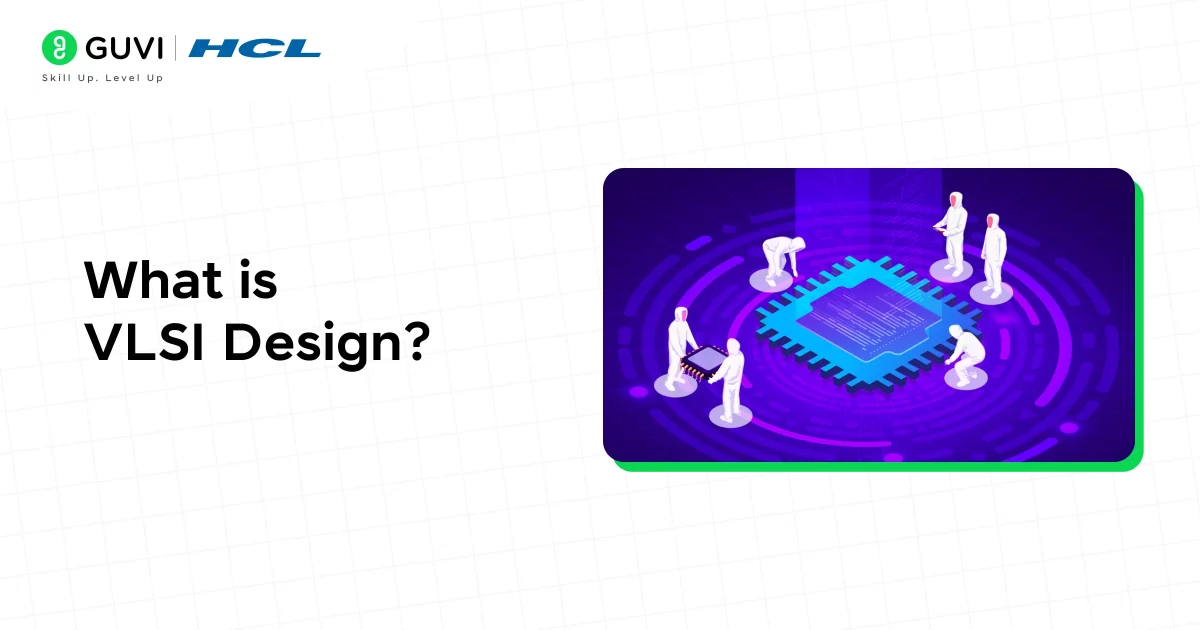
VLSI, or Very Large Scale Integration, is a process used to design and create integrated circuits (ICs) by combining millions (or even billions) of transistors into a single chip.
These chips power a wide range of electronic devices like smartphones, computers, medical devices, and even vehicles. Essentially, VLSI is the foundation of modern electronics.
Why is it Important?
Before VLSI, circuits were built using discrete components, which made devices bulky, slower, and less efficient. With VLSI technology, engineers can miniaturize circuits, pack more functionality into smaller spaces, and improve performance, making modern gadgets possible.
What Does VLSI Design Involve?
The VLSI design process typically includes:
- Front-End Design: Focused on the logic and functionality of the chip, involving steps like system design, coding (HDL – Hardware Description Languages like Verilog/VHDL), and simulation.
- Back-End Design: Concerned with the physical implementation, including circuit layout, floorplanning, placement, and routing.
Tools like EDA (Electronic Design Automation) software help streamline these tasks.
Real-World Applications
- Microprocessors and GPUs: The brains behind computers and gaming consoles.
- Memory Chips: Used in smartphones, cameras, and other devices.
- ASICs (Application-Specific Integrated Circuits): Custom-designed chips for specific tasks like AI or 5G.
- FPGA (Field Programmable Gate Arrays): Reprogrammable chips used in prototyping and specific applications.
To put it simply, VLSI design is all about creating the tiny yet powerful chips that make modern technology smarter, faster, and more efficient!
Benefits of Learning VLSI Design Course
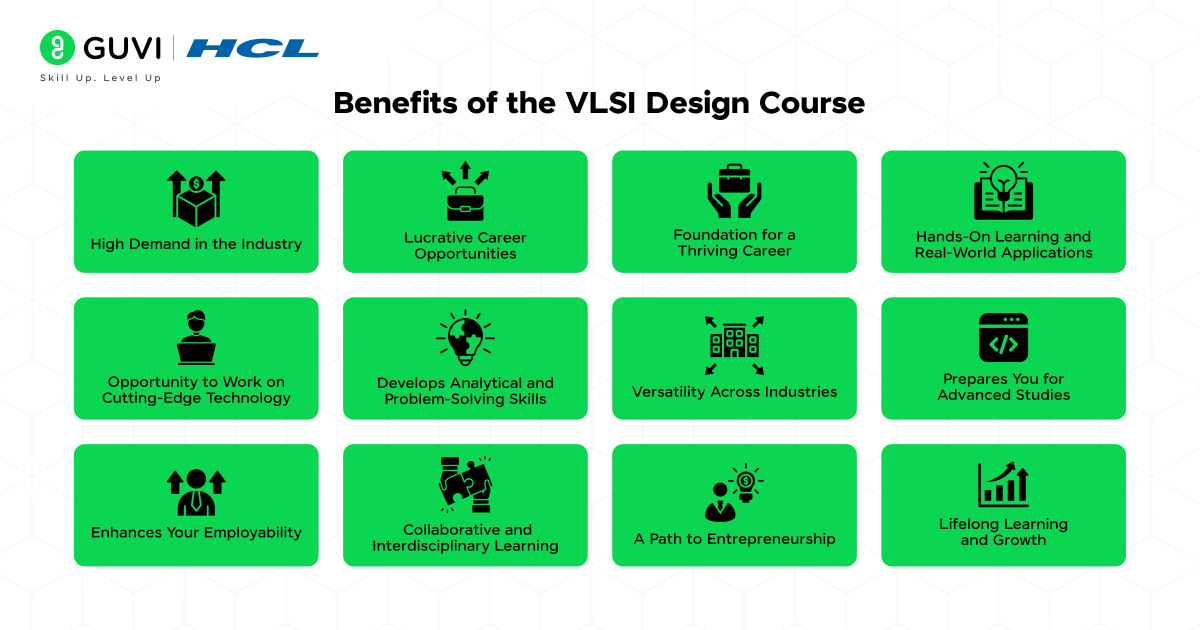
Choosing a VLSI design course can be a game-changer for anyone interested in the field of electronics, hardware design, and semiconductor technology.
Let’s dive deeper into why this course can be incredibly beneficial for your career and learning journey.
1. High Demand in the Industry
The semiconductor industry is the backbone of the modern tech ecosystem. Every device, from a smartphone to a supercomputer, relies on integrated circuits (ICs). This ever-increasing demand for ICs means companies are always on the lookout for skilled VLSI professionals. By taking a VLSI design course, you position yourself as a valuable asset in this growing industry.
2. Lucrative Career Opportunities
Completing a VLSI design course opens doors to several high-paying and rewarding career paths in the electronics and semiconductor industries. Here’s a brief look at some of the prominent roles:
- ASIC Design Engineer: Focuses on designing Application-Specific Integrated Circuits tailored for particular tasks or devices, such as processors in smartphones or GPUs for gaming.
- FPGA Engineer: Works with field-programmable gate arrays and reprogrammable chips used in prototyping and specialized systems.
- Verification Engineer: Ensures that chip designs function correctly through rigorous testing and debugging using simulation tools.
- Physical Design Engineer: Focuses on the physical implementation of IC designs, including layout, placement, and routing on silicon.
- System-on-Chip (SoC) Engineer: Designs integrated chips that combine multiple components like processors, memory, and I/O on a single platform.
3. Foundation for a Thriving Career
VLSI design is a highly specialized field, which means fewer people have the required skills. A course in VLSI gives you the technical expertise to excel in roles like:
- ASIC Design Engineer: Focused on application-specific ICs for specialized functions.
- FPGA Engineer: Working on programmable chips for diverse applications.
- Verification Engineer: Ensuring the accuracy and functionality of designs.
- Physical Design Engineer: Responsible for the chip layout and physical implementation.
The knowledge you gain in a VLSI course equips you for these roles and more.
4. Hands-On Learning and Real-World Applications
Most VLSI design courses include hands-on training with industry-standard tools and software like CAD tools, FPGA kits, and EDA software. This practical exposure prepares you for real-world challenges, giving you a competitive edge. You’ll learn to design, simulate, and test circuits, translating theoretical concepts into practical expertise.
5. Opportunity to Work on Cutting-Edge Technology
If innovation excites you, VLSI design offers the perfect playground. You’ll be involved in designing ICs for cutting-edge technologies like:
- AI and Machine Learning: Creating chips optimized for neural networks.
- 5G Technology: Developing circuits for high-speed communications.
- IoT Devices: Enabling connectivity in everyday gadgets.
- Autonomous Vehicles: Powering advanced driver-assistance systems.
By learning VLSI, you’re contributing to the technology that defines the future.
6. Develops Analytical and Problem-Solving Skills
Designing ICs requires solving complex problems, optimizing layouts, and debugging issues in simulations. These challenges help you enhance your analytical thinking and problem-solving abilities. These skills are transferable and valuable across various domains, not just in VLSI.
7. Versatility Across Industries
ICs are used in nearly every industry:
- Healthcare: In medical imaging devices and wearable health monitors.
- Automotive: In autonomous driving systems and vehicle electronics.
- Telecommunications: In routers, modems, and 5G infrastructure.
- Consumer Electronics: In gadgets like smartphones, smartwatches, and gaming consoles.
Learning VLSI opens doors to all these sectors, allowing you to choose your area of interest.
8. Prepares You for Advanced Studies
If you plan to pursue a master’s degree, Ph.D., or research in fields like electronics, nanotechnology, or quantum computing, a VLSI course provides a strong foundation. It equips you with the technical depth required for advanced research and innovation.
9. Enhances Your Employability
Employers value candidates who can work on real-world problems and use industry-standard tools. By completing a VLSI design course, you demonstrate your readiness for the job market. Certifications and practical projects included in such courses further boost your profile.
10. Collaborative and Interdisciplinary Learning
VLSI design isn’t an isolated skill—it overlaps with fields like software engineering, system architecture, and hardware testing. Learning VLSI often involves working in teams, which improves your collaboration and communication skills. You also gain exposure to interdisciplinary knowledge, making you a well-rounded professional.
11. A Path to Entrepreneurship
With expertise in VLSI design, you can venture into designing custom ICs or working on niche applications in IoT, AI, or wearable tech. Many startups in the semiconductor and hardware space began with VLSI professionals leveraging their specialized skills to solve real-world problems.
12. Lifelong Learning and Growth
The field of VLSI is ever-evolving. By taking a course, you start a journey of continuous learning. Whether it’s new fabrication techniques, advances in chip architecture, or breakthroughs in low-power design, staying updated keeps your career dynamic and exciting.
In a nutshell, a VLSI design course equips you with in-demand skills, opens up exciting career opportunities, and positions you at the forefront of technological innovation.
If you want to learn VLSI design through a step-by-step process guided by a professional mentor that includes Digital Electronics, UNIX and even Shell Scripting, consider enrolling in GUVI’s Certified VLSI Design Course which not only teaches you everything about the subject but also provides you with an industry-grade certificate!
Conclusion
In conclusion, taking a VLSI design course is an investment in your future. It’s not just about learning to design circuits, it’s about opening doors to exciting opportunities, sharpening your problem-solving skills, and contributing to the technologies shaping our world.
Whether you’re a student, a working professional, or someone with a passion for electronics, this course can be your gateway to a fulfilling and impactful career.
FAQs
VLSI (Very Large Scale Integration) involves integrating thousands of transistors into a single chip to create complex integrated circuits, forming the backbone of modern electronic devices.
Enrolling in a VLSI design course equips you with specialized skills in high demand within the semiconductor industry. GUVI’s VLSI Design Course includes features like UNIX, Shell Scripting, and PERL Scripting that are much needed in today’s digitally driven world!
Graduates can pursue roles such as ASIC Design Engineer, FPGA Engineer, Verification Engineer, and Physical Design Engineer, contributing to the development of advanced electronic systems.
A solid foundation in electronics and digital logic design is beneficial. Familiarity with programming languages like Verilog or VHDL can also be advantageous.
VLSI design enables the creation of compact, efficient, and high-performance integrated circuits essential for devices like smartphones, computers, and IoT gadgets, driving technological innovation.

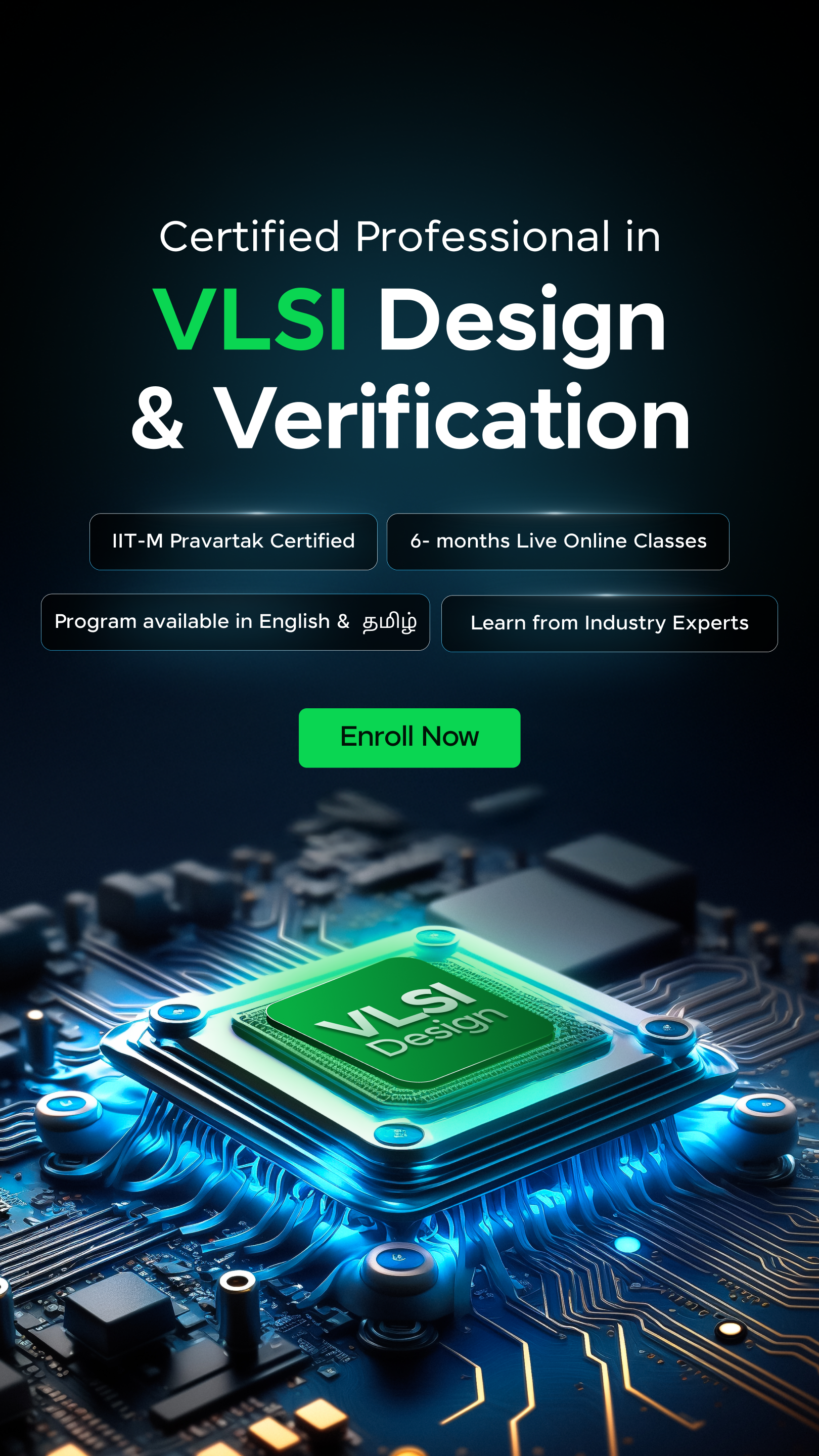



















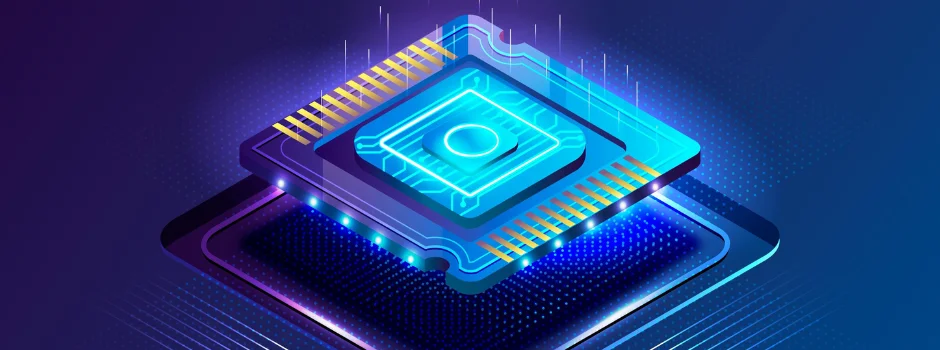

![Top 8 VLSI Design Job Roles [2025] 6 vlsi design job roles](https://www.guvi.in/blog/wp-content/uploads/2025/03/Top-8-VLSI-Design-Job-Roles.png)
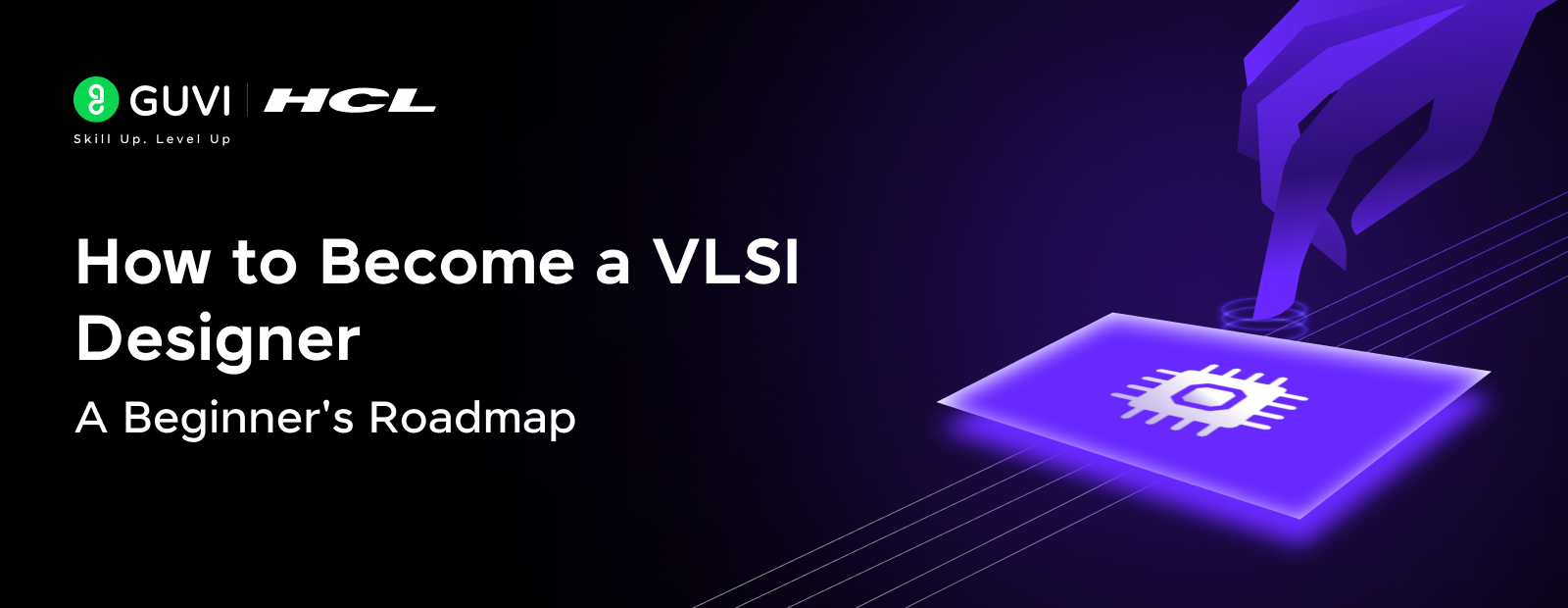
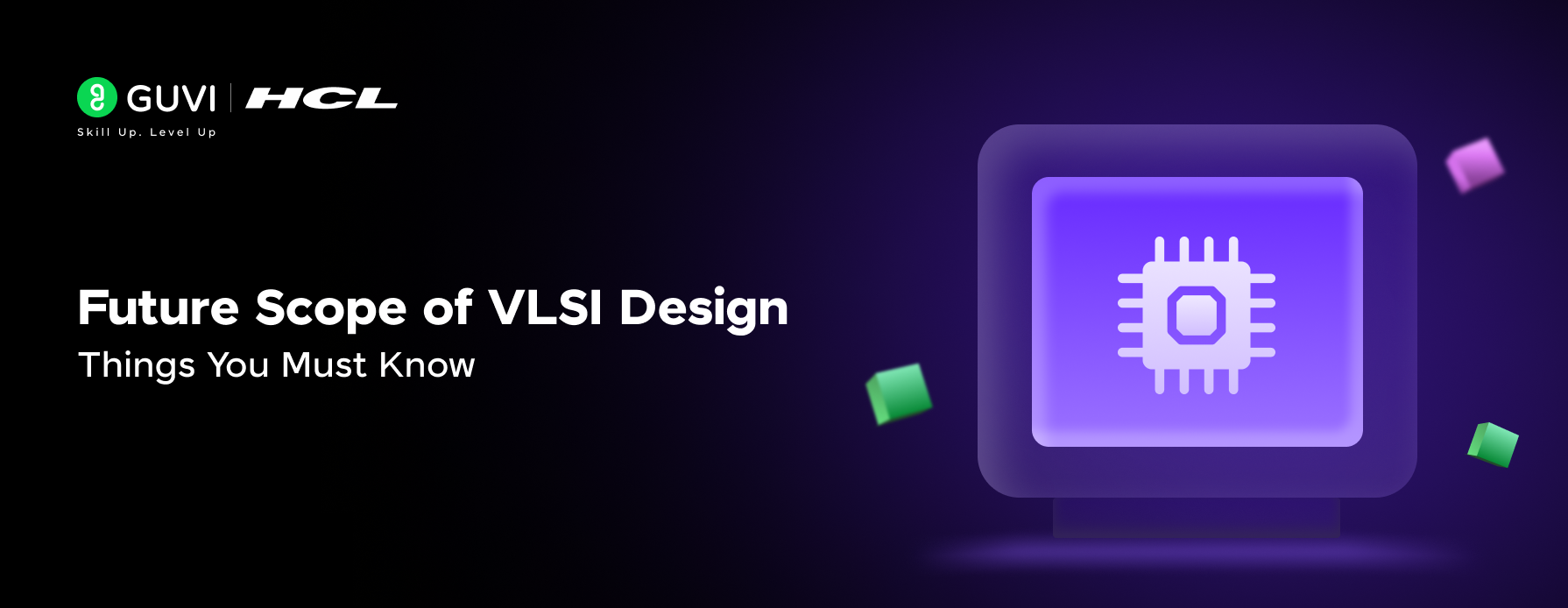
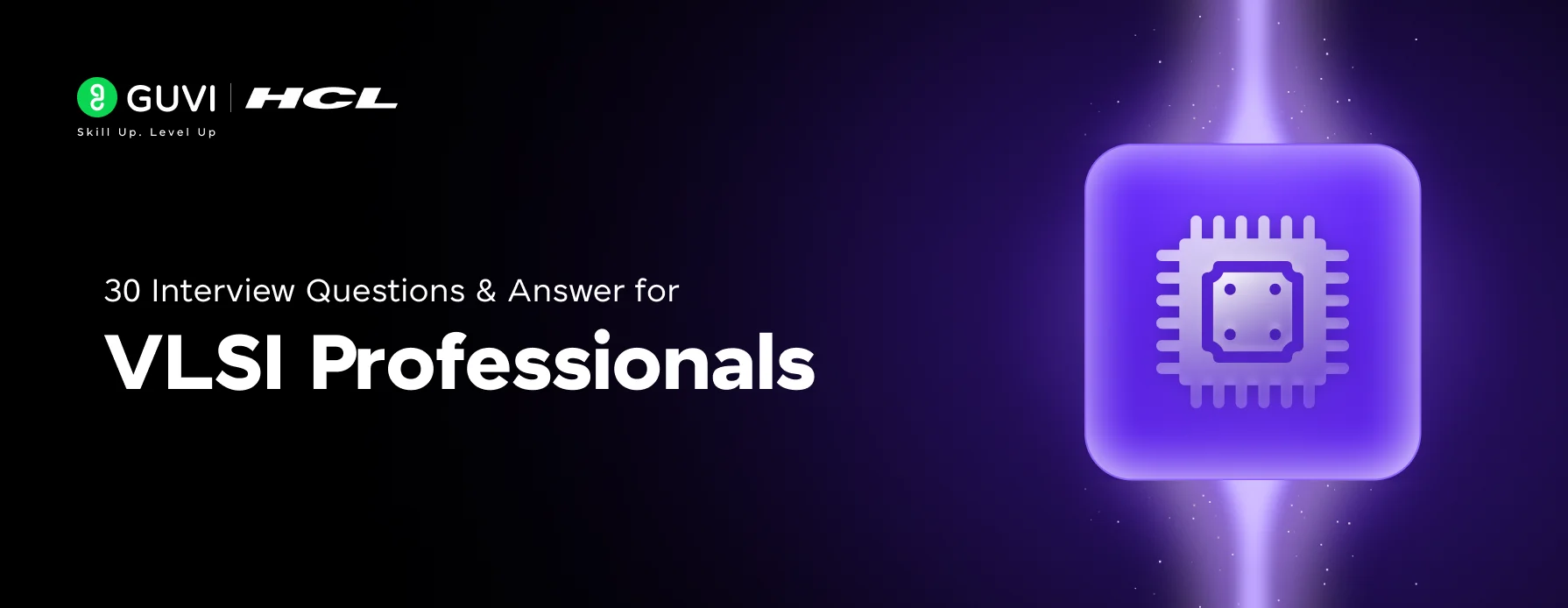


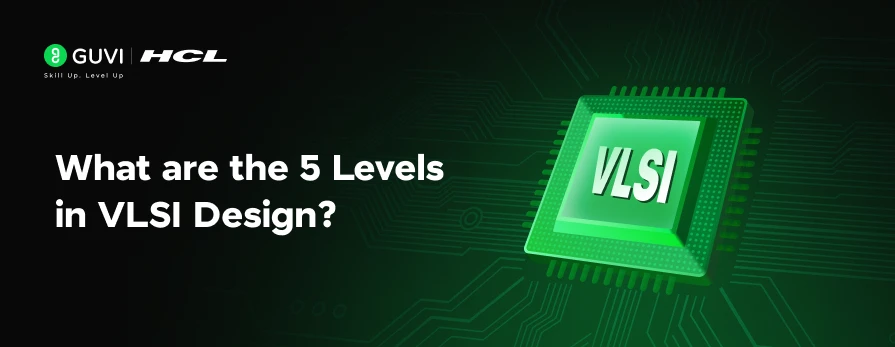

Did you enjoy this article?